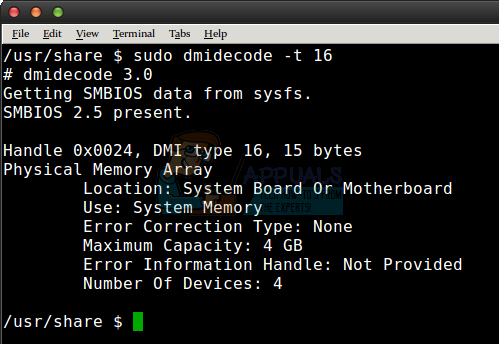- Check Memory Slots Linux Downloads
- Linux Check Memory Slots Used
- Check Free Memory Slots Linux
- Check Memory Slots Linux Iso
- Check Memory Slots Linux Upgrade

Linux Ccheck Memory Slots At the same time, each Online Slots game will have its own unique set of individual rules and characteristics. Before playing any new Online Slots game, you should become familiar with how the game works by trying the free demo version and having a close look at the game’s paytable.
- Instead of checking memory on the main partition, you might want to look at the size of memory across all drives and partitions. Here’s where Mac’s and Linux machines differ. Macs diskutil list. Diskutil list checks for the size of drives connected to your Mac. Linux sudo fdisk -l. Fdisk -l does a similar check like diskutil -l but for.
- Finding RAM size details in Linux for a System admin is very easy task. We can use free command to check how much RAM is present in our system. But when you want to find how many RAM/Memory sa lots are present in your system is bit tricky one. One way to do open your system and check what sa lots are there and how much RAM.
Here’s a useful way of finding out how many memory slots are occupied on the motherboard of a machine without removing the cover, as well as how much installed physical memory is supported.
Check Memory Slots Linux Downloads
We can use the dmidecode command to reveal your systems DMI table, which contains details of the systems hardware.
There are a whole load of DMI types we can look at – a full table of those at the end of this article.
In this particular case, we are interested in memory – type 16 ‘Physical Memory Array’ will show us how much memory is supported and DMI type 17 will reveal details of currently installed memory.
Linux Check Memory Slots Used
So, first off:-
dmidecode -t 16
Maximum Capacity shows us the maximum amount of memory can be installed in the machine. Number of devices tells us how many slots there are on the motherboard – in this case, 8.
Now we can interrogotate DMI type 17 – ‘Memory Device’ to show us details of installed memory
dmidecode -t 17
Each module installed will be listed with the the information given above. If we just want to know how many modules are installed and what size they are, we only really need the Size: – so we use grep
dmidecode -t 17 grep Size
From this we can see that 8x 2048MB modules are installed – so all the slots on the motherboard are populated.

There is plenty of other useful information that can be retrieved using dmidecode, including
Check Free Memory Slots Linux
-t1 System
-t2 Base Board

-t3 Chassis
Check Memory Slots Linux Iso
-t4 CPU
Check Memory Slots Linux Upgrade
-t9 PCI slots
Full SMIBIOS Specification
1 System
2 Base Board
3 Chassis
4 Processor
5 Memory Controller
6 Memory Module
7 Cache
8 Port Connector
9 System Slots
10 On Board Devices
11 OEM Strings
12 System Configuration Options
13 BIOS Language
14 Group Associations
15 System Event Log
16 Physical Memory Array
17 Memory Device
18 32-bit Memory Error
19 Memory Array Mapped Address
20 Memory Device Mapped Address
21 Built-in Pointing Device
22 Portable Battery
23 System Reset
24 Hardware Security
25 System Power Controls
26 Voltage Probe
27 Cooling Device
28 Temperature Probe
29 Electrical Current Probe
30 Out-of-band Remote Access
31 Boot Integrity Services
32 System Boot
33 64-bit Memory Error
34 Management Device
35 Management Device Component
36 Management Device Threshold Data
37 Memory Channel
38 IPMI Device
39 Power Supply
40 Additional Information
41 Onboard Device